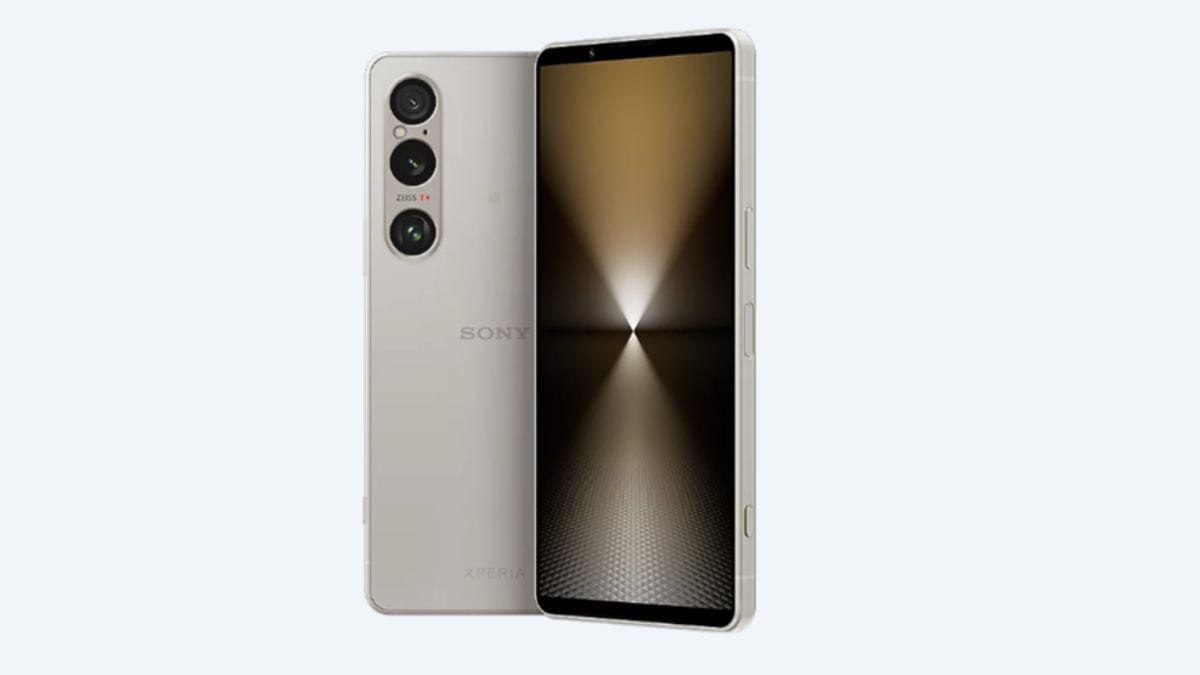Jesse Lyu, the CEO and founder of an AI startup called Rabbit, says he doesn’t want to replace your smartphone. At least not right away. His company’s new gadget, a $199 standalone AI device called the R1, is so staggeringly ambitious that Lyu seems to think he can’t help but replace your phone at some point. Just not quite yet.
The R1 looks a little like a Playdate console or maybe a modernized version of one of those ’90s-era handheld TVs. It’s a standalone gadget about half the size of an iPhone with a 2.88-inch touchscreen, a rotating camera for taking photos and videos, and a scroll wheel / button you press to navigate around or talk to the device’s built-in assistant. It has a 2.3GHz MediaTek processor, 4GB of memory, and 128GB of storage, all inside a rounded body designed in collaboration with the design firm Teenage Engineering. All Rabbit says about the battery is that it lasts “all day.”
The software inside the R1 is the real story, though: Rabbit’s operating system, called Rabbit OS, and the AI tech underneath. Rather than a ChatGPT-like large language model, Rabbit says Rabbit OS is based on a “Large Action Model,” and the best way I can describe it is as a sort of universal controller for apps. “We wanted to find a universal solution just like large language models,” he says. “How can we find a universal solution to actually trigger our services, regardless of whether you’re a website or an app or whatever platform or desktop?”
In spirit, it’s an idea similar to Alexa or Google Assistant. Rabbit OS can control your music, order you a car, buy your groceries, send your messages, and more, all through a single interface. No balancing apps and logins — just ask for what you want and let the device deliver.
Image: Rabbit
Rather than build a bunch of APIs and try to convince developers to support the R1, though, Rabbit trained its model on how to use existing apps for itself. The large action model, or LAM, was trained by humans interacting with apps like Spotify and Uber, essentially showing the model how they work. The LAM learned what a Settings icon looked like, how to know when an order was confirmed, and where the search menus are. All that, Lyu says, can be applied to any app anywhere.
The R1 also has a dedicated training mode, which you can use to teach the device how to do something, and it will supposedly be able to repeat the action on its own going forward. Lyu gives an example: “You’ll be like, ‘Hey, first of all, go to a software called Photoshop. Open it. Grab your photos here. Make a lasso on the watermark and click click click click. This is how you remove watermark.’” It takes 30 seconds for Rabbit OS to process, Lyu says, and then it can automatically remove all your watermarks going forward.
How all of this actually works in practice, though, is the real question. You’ll be able to do some things on the R1 itself, and there’s a web portal called Rabbit Hole through which you log in to all your various services. But how is your Rabbit device going to watch you use Photoshop? That, like a lot of the details of the R1, isn’t totally clear yet.
What ChatGPT could be to web search, Rabbit OS could be to the app store
Rabbit’s approach here is pretty clever. Getting anyone to support a new operating system is tough, even if you’re a tech giant, and the LAM way subverts that by just teaching the model how to use apps. More broadly, we’re seeing a rash of new AI-powered hardware coming to the market, but too often, all those gadgets do is connect to a chatbot. Rabbit is, by contrast, more like a super app — a single interface through which you can do just about anything. What ChatGPT could be to web search, Rabbit OS could be to the app store. There are a thousand complications and caveats to that dream, of course, but it’s an interesting dream.
Listening to Lyu talk about Rabbit OS and the R1, though, it’s not entirely clear what the company’s vision for this device really is. It’s not nearly powerful enough to replace your phone, though it can make video calls and does have a slot for a SIM card. It’s primarily a voice assistant, but the device has a screen and a camera. It’s not just a voice assistant… but it does a lot of voice assistant things. Rabbit says it has designed Rabbit OS with security and privacy in mind, but it is also asking you to log in to some of your most used services through its interface. The R1, in Lyu’s view, is both a nifty accessory and the all-in-one future of pretty much everything.
The R1 is available for preorder now, and Lyu says the device will start shipping in March. He even thinks, and maybe hopes, he might beat Humane’s AI Pin to market.


/cdn.vox-cdn.com/uploads/chorus_asset/file/25212782/rabbit_r1_front.jpg)
/cdn.vox-cdn.com/uploads/chorus_asset/file/25337913/HT047_VISION_PRO_CALIBRATE.jpg)
/cdn.vox-cdn.com/uploads/chorus_asset/file/25263320/STK169_Zuckerberg_C_CVirginia.jpg)

/cdn.vox-cdn.com/uploads/chorus_asset/file/25663284/Screenshot_2024_10_07_at_1.58.18_PM.png)

